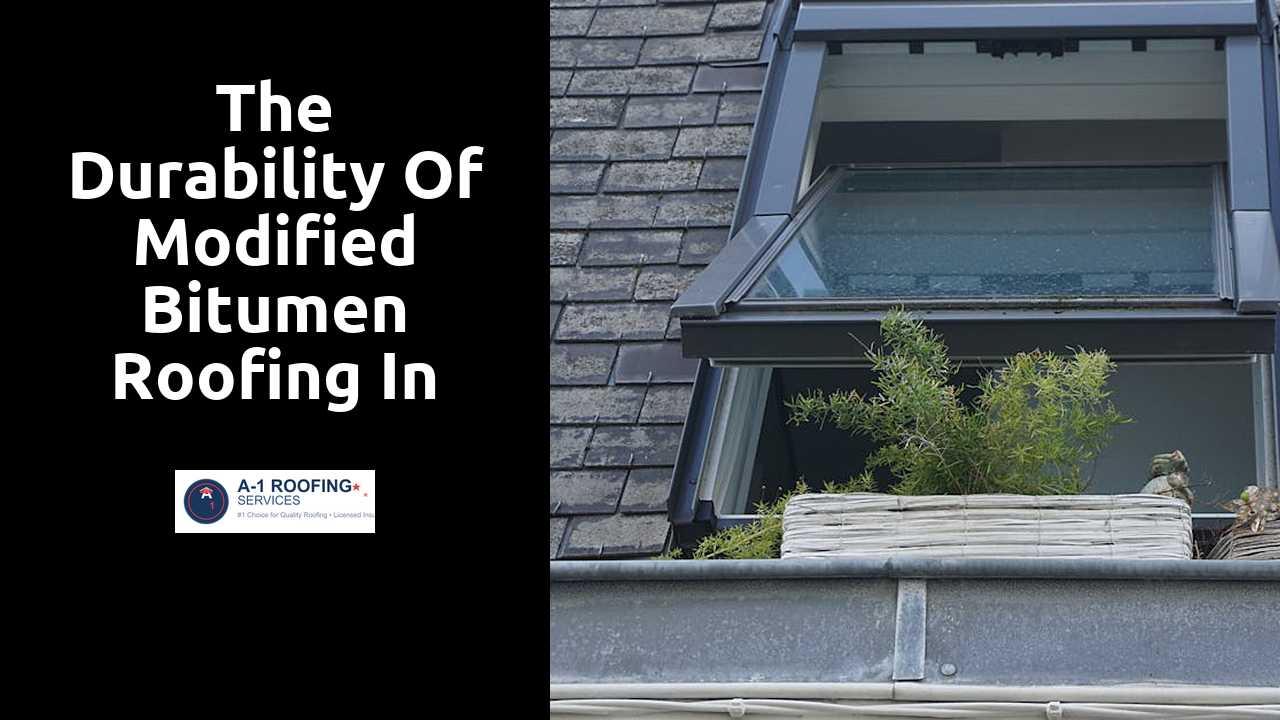
The Durability of Modified Bitumen Roofing in Harsh Climates
Table Of Contents
Maintenance Requirements for Longevity
Routine maintenance is essential for ensuring the longevity of modified bitumen roofing systems. Regular inspections play a crucial role in identifying potential issues before they escalate into significant problems. Homeowners should check for signs of damage, such as cracking, blistering, or separation at the seams. Addressing minor repairs promptly can prevent water infiltration and extend the life of the roof.
Additionally, seasonal maintenance tasks should be scheduled to enhance performance. Clearing debris from the roof surface and gutters helps prevent moisture buildup, which can lead to deterioration. It is also advisable to keep an eye on flashing and ventilation systems, ensuring everything remains intact and functional. Investing time in maintenance will ultimately pay off in the form of reduced repair costs and enhanced roof durability.
Navigate to these guys for detailed information.
Regular Inspections and Repairs
Regular inspections are essential for ensuring the longevity of modified bitumen roofing systems. These inspections should be scheduled at least twice a year, ideally in spring and fall. Roofing professionals can identify early signs of wear, such as blisters, cracks, or loose seams. Addressing these issues promptly can prevent more significant damage and costly repairs down the line.
In addition to scheduled inspections, routine maintenance is crucial for keeping the roof in optimal condition. Cleaning debris off the roof's surface and ensuring that drainage systems are clear will prevent water buildup. Small repairs, such as sealing minor leaks or reapplying patches, can be done as needed to maintain the integrity of the roofing system. Implementing a proactive maintenance strategy extends the life of the roof and enhances its performance in harsh climates.
Environmental Impact of Modified Bitumen
Modified bitumen roofing systems present several environmental considerations both during production and at the end of their life. The manufacturing process typically involves petroleum-based materials, contributing to greenhouse gas emissions. However, advancements in technology have led to improvements by reducing harmful emissions during production and increasing energy efficiency. Additionally, these roofing systems are designed to withstand harsh weather conditions, potentially extending their lifespan and reducing the frequency of replacements.
In terms of sustainability, innovative recycling methods are being explored. Modified bitumen can be repurposed in various applications, such as asphalt paving or even incorporated into new roofing products. This reduces landfill waste and promotes a circular economy. Moreover, manufacturers are increasingly using recycled content in their products, lessening the environmental footprint. The integration of sustainable practices within the industry shows promise for reducing the ecological impact associated with the use of modified bitumen in roofing.
Sustainability and Recycling Options
The sustainability of modified bitumen roofing is complemented by various recycling options that contribute to a more environmentally responsible building practice. Many manufacturers have adopted programs that allow for the recycling of old roofing materials. This practice not only alleviates waste in landfills but also reduces the need for raw material extraction, which can be environmentally taxing. Significant advancements in technology have made it feasible to process used modified bitumen, turning it into new roofing products or alternative building materials.
Recycling modified bitumen can also lead to cost savings for both property owners and contractors. By reusing materials, businesses reduce disposal fees and sometimes benefit from incentives for sustainable waste management. Additionally, the energy required to produce new roofing materials is considerably higher than that needed to recycle existing products. This shift towards recycling not only helps in conserving natural resources but also promotes a circular economy within the construction sector, encouraging sustainable practices at every level.
Comparing Modified Bitumen to Other Roofing Materials
When assessing roofing materials, modified bitumen stands out due to its unique blend of flexibility and strength. Unlike traditional asphalt shingles, which can become brittle over time, modified bitumen maintains its integrity under extreme temperature variations. This roofing option also excels in resisting moisture, making it an ideal choice for regions with heavy rainfall or snowfall. Furthermore, its adaptability to different roofing designs ensures that it can be effectively applied to both residential and commercial structures.
In contrast to materials like metal or tile, modified bitumen often presents a more visually appealing finish while offering comparable energy efficiency. The installation process is generally simpler and more cost-effective than that of metal roofing, which requires specialized skills. Although tile roofs can provide exceptional longevity, they often come with a higher price tag and more complex installation requirements. Modified bitumen thus serves as a practical and economically sensible alternative for building owners seeking durability without sacrificing style.
Cost Efficiency and Lifespan
Modified bitumen roofing offers significant cost efficiency when evaluated over its lifespan. This roofing material boasts a durability that can extend up to 20-30 years, depending on environmental conditions and maintenance practices. Considering initial installation costs, these roofs often require fewer repairs compared to traditional systems. This long-term durability translates into lower overall costs for homeowners and businesses, relieving financial burdens associated with frequent replacements.
While the upfront investment may be comparable to other roofing options, the lifecycle costs of modified bitumen can be notably lower. Reduced maintenance needs contribute to this efficiency. Additionally, energy-efficient properties help decrease heating and cooling expenses. These factors collectively make modified bitumen a sound financial choice for anyone looking to invest in a roofing solution that withstands harsh climates while providing reliable performance.
Related Links
An Overview of Roof Garden Systems for Urban Commercial SpacesUnderstanding TPO Roofing Systems for Commercial Applications